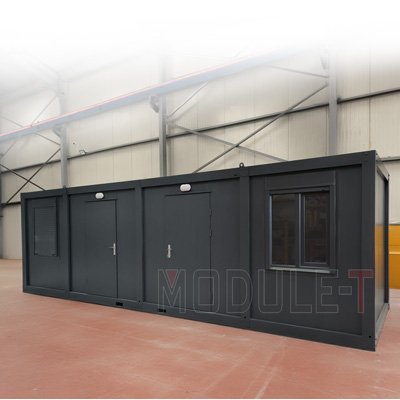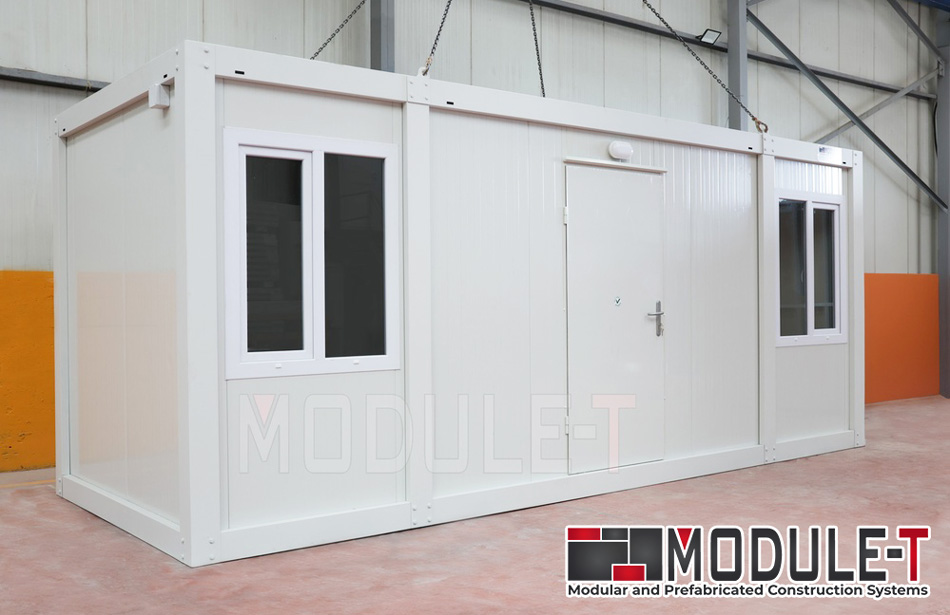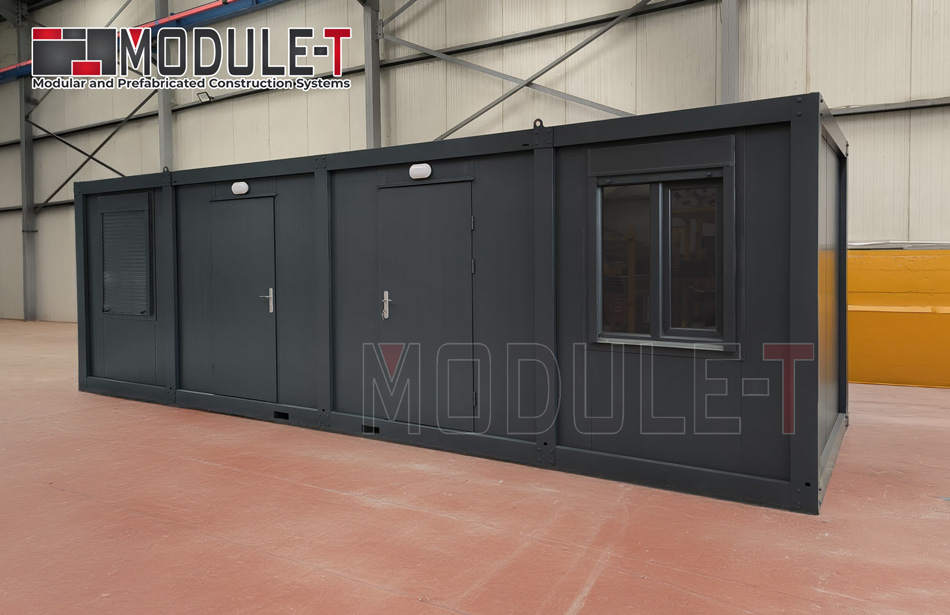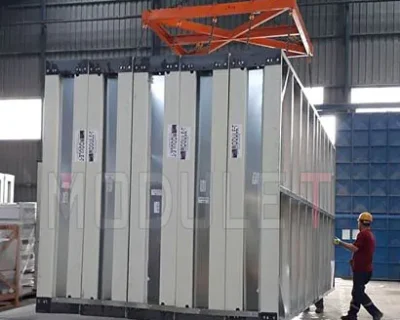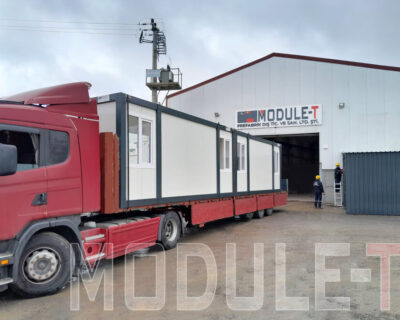Container Offices: The Future of Flexibility at Work
20 May 2024In the era of the future of flexibility at work, traditional office spaces are giving way to innovative solutions. Office containers are a prime example of design creativity and mobility. As businesses adapt to the future of flexibility at work, they embrace compact, modular structures to maximize space and boost productivity. These structures offer a glimpse into how work environments can evolve, meeting the demands of both companies and employees. Ultimately, the future of flexibility at work lies in solutions like these—combining efficiency, adaptability, and modern design.
Container Offices: A New Way in Workspace Design
The future of flexibility at work reshapes how companies approach office design, moving away from traditional setups toward more adaptive solutions. Modular office spaces embody this shift by offering flexibility, sustainability, and efficiency. Unlike rigid structures, these workspaces align with modern workplace trends, emphasizing adaptability and sustainable practices. This approach allows businesses to create tailored environments—whether for collaboration zones, focus areas, or hybrid workspaces—based on their evolving needs.
A major strength of these offices lies in their ability to maximize space utilization. Every aspect, from layout to furniture, is thoughtfully designed to enhance productivity. Additionally, these structures offer customization options, such as integrating locker containers directly into the office setup, ensuring seamless employee experiences without needing separate facilities.
These solutions are ideal for fast-growing companies or those requiring temporary workspaces. Their portability ensures easy relocation and installation, making them well-suited for companies adjusting to shifting markets or opening new sites. This combination of mobility and adaptability perfectly aligns with the future of flexible workspaces, offering businesses the versatility needed to thrive in a dynamic environment.
How Do Modular Offices Redefine Productivity?
In pursuing the future of flexibility at work, businesses are turning to innovative solutions beyond traditional offices. Modular structures enable seamless workflow integration by supporting high-capacity environments. With well-planned layouts and ergonomic furniture, employees can move easily between tasks, reducing interruptions and boosting productivity.
These spaces also focus on optimized space utilization by making the most of every square foot. Their minimalist design eliminates clutter and distractions, helping employees stay focused and efficient. As companies strive to enhance performance, these flexible work environments ensure that no space is wasted, meeting the needs of modern business operations.
Along with physical efficiency, these workspaces offer the adaptability needed for today’s remote work trends. They provide a balanced option between home and traditional offices, creating a professional atmosphere that improves remote workers’ output. Additionally, their customizable designs allow businesses to shape environments for different needs with other solutions, such as modular kiosks, ensuring long-term productivity and growth.
Key Considerations in Office Layouts
In line with the future of flexibility at work, designing an efficient office layout requires careful planning to ensure functionality, comfort, and productivity. Below are key aspects to consider:
- – Functional Space Allocation: Each area within the layout should serve a clear purpose. This includes individual workstations, meeting rooms, collaborative spaces, and recreational zones. Properly positioning these zones ensures smooth workflows and helps boost employee efficiency.
- – Ergonomic Design: Prioritize ergonomic principles to create a comfortable work environment. Ensure that desks, seating, and lighting setups support employee well-being. Ergonomic furniture minimizes fatigue and reduces the risk of injuries, ultimately promoting long-term productivity.
- – Modular Flexibility: Leverage features to design spaces that can evolve with business needs. Movable partitions, furniture, and demountable walls make it easy to reconfigure layouts. This adaptability ensures companies can grow, reorganize, or adjust to new workflows with minimal disruption.
- – Incorporating Accommodation Containers: For businesses needing onsite lodging solutions, accommodation containers can seamlessly complement office spaces, offering practical and portable employee housing.
- – Aesthetic Appeal: Balance functionality with aesthetics to foster a positive and inspiring work atmosphere. Incorporate brand-aligned colors, artwork, and greenery to create an environment that motivates employees and enhances creativity.
Case Studies: Successful Implementations of Container Offices
In pursuing the future of flexibility at work, innovative modular office designs transform how businesses create productive environments. Several leading companies have embraced these solutions to meet the evolving needs of modern work. Below are case studies showcasing how modular offices are being utilized in diverse business contexts:
Box Office in California
Box, a cloud content management company, adopted offices for their headquarters in Redwood City, California, reflecting the future of flexibility at work. These modern spaces offer ergonomic workstations and flexible layouts, ensuring employees have a comfortable environment that encourages creativity and efficiency.
Stack Exchange in New York City
Stack Exchange, the network of Q&A websites, reimagined its office space by introducing shipping-container-based modular workspaces. This setup exemplifies the future of flexibility at work by combining practicality with high-tech aesthetics. The adaptable design fosters productivity, collaboration, and alignment with the company’s innovative culture.
Bloomberg Connects in London
Bloomberg, a global financial information leader, integrated modular offices into their Bloomberg Connects program, embodying the future of flexibility at work. These mobile workspaces allow employees to work across multiple locations, maintaining connectivity and engagement. Bloomberg’s flexible office design supports seamless collaboration with the community and ensures adaptability in dynamic environments.
Predictions for The Future of Flexibility at Work
The future of flexibility at work is reshaping how businesses approach office space. With remote work and hybrid models becoming the norm, companies need structures that adapt to shifting workforce demands. Office containers are a versatile solution, often used in setups like prefab worker camps to provide on-site workspaces for construction, mining, and energy industries. Their ability to be quickly deployed makes them ideal for dynamic business environments.
Sustainability will also play a key role in the future of flexibility at work. Modular buildings made from repurposed materials align with eco-conscious practices, meeting regulatory standards and public expectations for greener operations. These spaces reduce waste and conserve resources, supporting long-term sustainability efforts.
As companies expand into new markets, these workspaces will continue to gain popularity for their portability and efficiency. With expertise in delivering innovative solutions, Module-T is well-positioned to help businesses embrace flexible, sustainable work environments and meet the evolving demands of modern workplaces.
CONTACT US
MODULE-T
KURIS KULE D-100 GUNEY YANYOL NO: 2 / 77-78 , KARTAL/ISTANBUL - TURKEY
PREFABRIK DIS TIC VE SAN LTD STI- +90 216 441 01 77
- Send Whatsapp Message
- info@module-t.com
